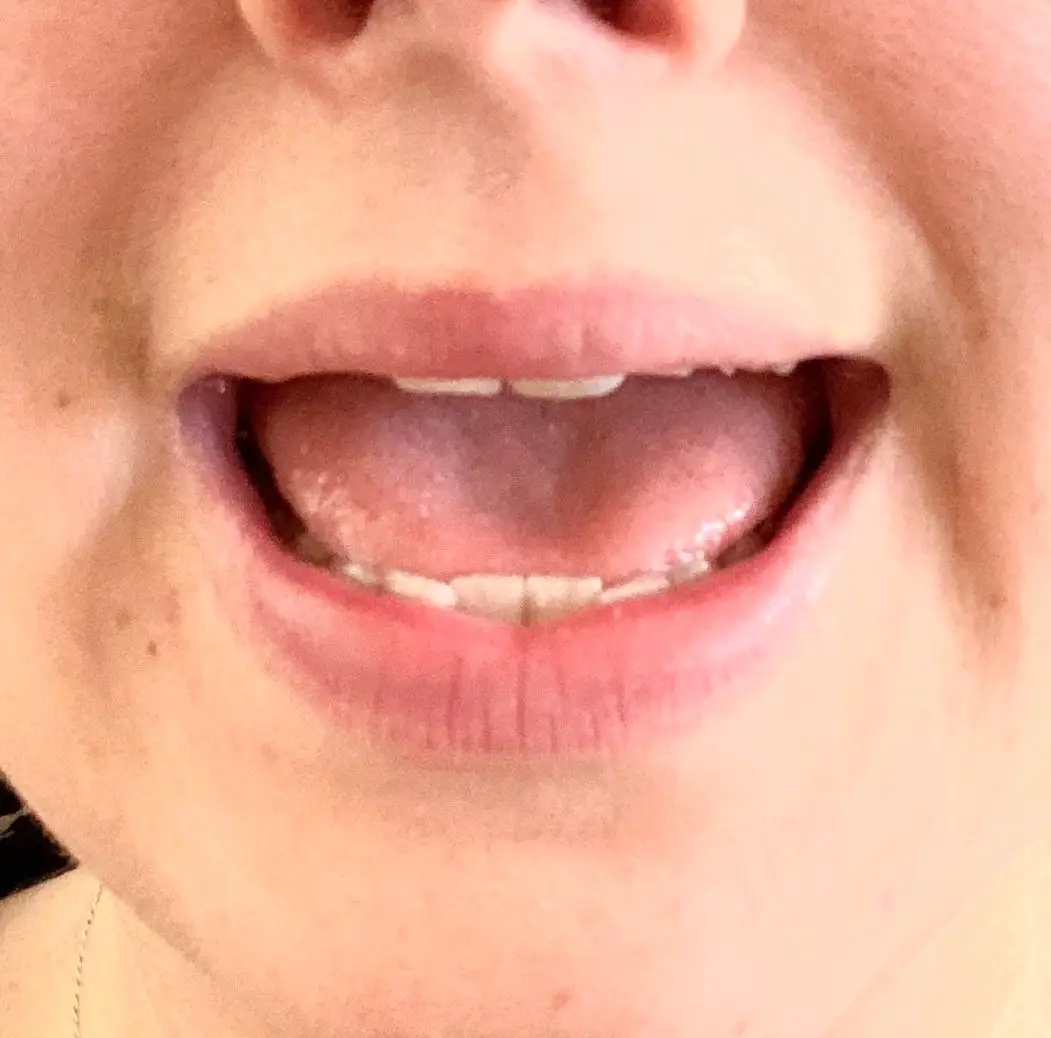5 Mouth Shapes for Singing + When to Use Them

The shape of your mouth makes a difference when you sing. You may have noticed the exaggerated mouth movements of singers on stage and wondered what the reason was. This article explains the 5 main mouth shapes and when they should be used.
Mouth shape when singing is is used to create space in your mouth for oral resonance. Your teeth should always be 1-2 fingers apart. For 'Ah', 'Eh' and 'Ee' sounds, your mouth should be wider with a gentle smile. For 'Oh' and 'Oo', your lips should be more rounded and your cheeks should be relaxed.
I will explain exactly what you should be doing with your mouth for each of these vowel sounds below, including images. Note that changing pitch also requires slight adjustments to the shape of your mouth. You can find out more about the affect of pitch on mouth shape further down.
Mouth Shapes when Singing
The shape of your mouth is part of what is known as your embouchure. This describes the position of your lips, tongue, teeth, jaw, etc. when singing. Therefore, when looking at mouth shapes for singing, you are really searching for the perfect embouchure.
What is the Best Mouth Shape for Singing?
There are several mouth shapes used when singing; each with their own unique purpose. Therefore, there is no 'best mouth shape'. However, each of the mouth shapes below aim to create more space in your mouth to improve oral resonance.
More oral resonance creates a louder, clearer and richer tone. Therefore when singing, your mouth usually needs to be opened wide. Opening up your mouth will also reduce nasality, which is caused when too much airflow passes through the nasal cavity instead of the oral cavity.
You can read more about how sound is produced when we sing in this article. You will also find information about how your voice changes with more use of your mouth.
Although it is best to have your mouth opened widely, this looks different for each vowel sound. Whether you are singing high or low also makes a difference, but I will discuss this further down.
Things you should be concentrating on to improve your oral resonance are:
- The shape of your lips.
- How far apart your teeth are (controlled by raising and lowering your jaw).
- The width of your mouth.
- Whether or not you should smile.
You can find all the appropriate mouth shapes for singing below, divided into each vowel. Note how the tongue changes position as well. This is inevitable to produce each vowel and is why we need to change the shape of our mouths to compensate.
Mouth Shape for A ('Ah')

- Your mouth should take on a horizontal oblong shape (wider than it is tall).
- Your teeth should be approximately 2-fingers apart.
- You should maintain a slight smile to pull back your cheeks.
Mouth Shape for E ('Eh')

- Your mouth should take on a horizontal oblong shape (wider than it is tall).
- The width of your mouth should increase compared to 'ah'.
- Your teeth should still be approximately 1.5-fingers apart.
- You should maintain a slight smile to pull back your cheeks.
Mouth Shape for I ('Ee')

- Your mouth should take on a horizontal oblong shape (wider than it is tall).
- The width of your mouth should increase even further compared to 'ah' and 'eh'.
- Your teeth should be approximately 1-finger apart.
- You should maintain a slight smile to pull back your cheeks.
Mouth Shape for O ('Oh')

- Your mouth should take on an open 'O' shape, slightly taller than wide.
- Your teeth should be approximately 2-fingers apart.
- You should relax your cheeks.
Mouth Shape for U ('Oo')

- Your mouth should take on a small 'o' shape.
- Your teeth should still be separated, approximately 1-finger apart.
- You should relax your cheeks.
Changing Your Mouth Shape with Pitch
There are slight variations you should make to the shape of your mouth when singing the lowest and highest notes in your range.
Extent of Your Smile
As you increase your pitch, you should pull your cheeks back further into a smile. As you decrease your pitch, your cheeks should relax further and further. In other words, you should feel like your mouth is more relaxed when singing lower notes.
This helps shape your mouth effectively so that the notes are easier to reach. If you would like to learn about increasing your range, take a look at this article.
Distance Between Your Teeth
Your teeth will also vary in distance. This distance should increase by approximately 1/2 a finger as you reach the top of your range and decrease by 1/2 a finger as you reach the bottom of your range (click here for information on vocal ranges).
For example, an 'ah' sound, where your teeth should be about 2-fingers apart, you will open your mouth to 2.5-fingers for the highest notes and 1.5-fingers for lowest notes.
Keeping your teeth closer together for lower notes ensures that your jaw does not get in the way of your larynx. Try feeling the front of your neck as you sing lower and lower. You will notice movement of your larynx as you do. This movement can become restricted if your mouth is open too far.
Does Mouth Size Affect Singing?
The size of your mouth can effect the tone and volume of your voice. This is because a smaller mouth results in more nasal resonance, which I have explained in more detail in this article.
Having a larger mouth allows more oral resonance, which enhances the volume of your voice. This is like the body of a guitar enhancing the sound of the guitar strings being plucked.
In addition to this, if there is more nasal resonance, those will smaller mouths may be prone to nasality in their voice. This tone can add a unique sound to your singing voice, but may also be considered harsh by some.
There are ways to reduce the nasality in your voice by optimising the space available in your mouth and the back of your throat. You can learn more about that here.
Finally, some individuals with smaller mouths may also have smaller vocal cords. This often leads to higher-pitched voices. However, even with a higher voice, you can still extend your vocal range by strengthening the muscles in your larynx.
Therefore, mouth size may affect singing by giving you a softer, more nasally tone. However, this structural predisposition can be worked on to increase the volume and change the tone of your voice.
